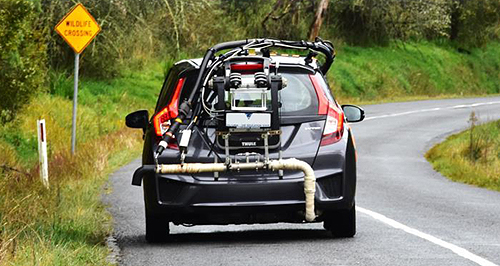News - General News - EmissionsFuel and CO2 figures greatly skewed, says AAAEmission commission: The AAA has found fuel and CO2 emissions to be on average 25 per cent higher than the results issued by government-mandated tests. Emissions up to 60 per cent greater than advertised according to AAA27 Mar 2017 UPDATED: 3:00PM 27/03/2017THE Australian Automobile Association (AAA) has released a damning report on the government-mandated combined cycle fuel and emissions testing standards, finding that real-world testing can yield up to 60 per cent greater fuel and emissions levels than advertised. The body, that encompasses Australia’s motoring clubs and its members, is in the process of testing 30 cars ranging from Euro 4 to Euro 6 emissions standards, and, out of the 17 tested so far, emissions were higher by an average of 25 per cent, with only one found to have had a lower emissions level than advertised. The biggest discrepancies were found in Euro 6-rated vehicles, which, out of three vehicles tested so far (two diesel and one petrol), fuel and CO2 emissions were found to be an average of 42 per cent higher than the combined cycle tests. Speaking on the Euro 6 discrepancies, an AAA spokesperson said: “The results demonstrate the problem with the government bringing in new standards without new processes to measure the real-world impact, and is consistent with overseas experience. “It highlights the need for the government to consider the real world emissions of vehicles in Australia before it commits to any new emissions or fuel standards.” The AAA is yet to release a list of which cars were tested. Noxious gas emissions were also said to be up to eight times the legal limit. The AAA’s report throws doubt on government claims that imposing tougher emissions regulations will save money for motorists by cutting fuel use. AAA chief executive Michael Bradley said the test results should be a caution to motorists who expect to save significant amounts of fuel money by buying new cars. “Our test results are a warning to Australians to take the government’s promises of fuel and cost savings with a grain of salt, and expect those savings to be significantly less than what’s promised,” he said. “Our on-road testing is further evidence that the assumptions upon which the government is basing its vehicle emissions reductions proposals are flawed, and may end up costing Australians more than necessary and deliver less to the environment than promised.” Mercedes-Benz Australia-Pacific senior manager public relations & product communications David McCarthy said that while the real-world emissions testing being done by the AAA is a good initiative, there are many uncontrolled variables that can skew test results either positively or negatively. Factors such as ambient air temperature, traffic conditions, driver habits and exact testing routes have yet to be released by the AAA, and cannot be replicated as accurately as in a laboratory. Under current regulations, fuel and emissions testing is done by vehicle manufacturers in a laboratory under government-mandated conditions, combining two simulated driving conditions – ‘urban’ and ‘extra-urban’ for a final, combined fuel consumption and emission figure. The 20-minute test is split into roughly two-thirds urban and one-third extra-urban testing, and is simulated by low average speeds (19km/h), roughly 30 per cent idle time, and stop-start sequences for the urban segment. Extra-urban testing has a higher average speed of 63km/h and a peak speed of 120km/h, however it does not simulate typical highway driving that usually involve a single, constant speed. Mr Bradley is advocating for testing parameters to be changed to include real-world testing instead of laboratory tests, as was done by the AAA. “The AAA does not shy away from the fact that Australian motorists must make a fair contribution to improving Australia’s environmental performance,” he said. “But emissions policy must deliver for the environment at the least cost to motorists and the economy. The AAA and Australia’s motoring clubs again call on the government to update its modelling, undertake further public consultation and introduce real-world driving testing for new vehicles in Australia.” The AAA’s real-world testing encompassed a predetermined route around Melbourne that included roughly equal amounts of urban, extra-urban and freeway driving in normal traffic conditions, which chalked up more than seven times the equivalent distance of the laboratory tests.  Read more |
Click to shareGeneral News articlesResearch General News Motor industry news |

















Facebook Twitter Instagram